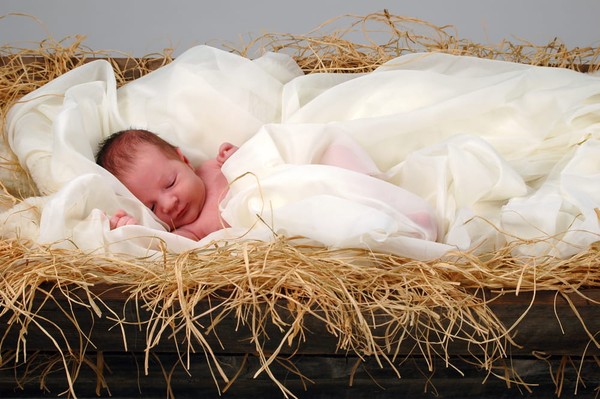Away in a Manger
- Published Nov 29, 2015

“She gave birth to her firstborn son and wrapped him in swaddling cloths and laid him in a manger, because there was no place for them in the inn” (Luke 2:7 ESV).
You may have heard that Martin Luther wrote this carol.
Don’t believe everything you hear.
Over a century ago, a rumor started that Luther wrote this beautiful song. We know he wrote many songs, so the thought is not impossible. His name even appears in some older hymnals as the author of “Away in a Manger.” It was even called “Luther’s Cradle Hymn.” But it is not true. Luther lived in the 1500s. The first two verses appeared in print in 1885. An unknown author added the third verse in 1892. Historians tell us over 40 different tunes have been used for this carol, but only two have gained widespread acceptance. In America we traditionally use a tune by William Kirkpatrick; James Murray composed the tune most often used in Britain.
Authorship aside, this carol is justly beloved as perhaps the greatest of all the Christmas hymns written for children. Using simple words, the song paints a picture of Jesus’ birth as a child might describe it.
Away in a manger, no crib for a bed,
The little Lord Jesus laid down his sweet head.
The stars in the sky looked down where he lay,
The little Lord Jesus asleep in the hay.
The second verse becomes a prayer for Jesus’ protection for all the little children:
The cattle are lowing, the baby awakes,
But little Lord Jesus, no crying he makes;
I love thee, Lord Jesus, look down from the sky
And stay by my cradle till morning is nigh.
Here’s the third verse that was added later:
Be near me, Lord Jesus, I ask thee to stay
Close by me forever, and love me, I pray;
Bless all the dear children in thy tender care,
And fit us for heaven to live with thee there.
Some people have wondered about the line in the second stanza that says of the infant Jesus, “No crying he makes,” because the Bible doesn’t say Jesus never cried as a child. Since we know he shed tears as an adult, and since crying is part of the human experience, we may safely assume Jesus cried as a baby. But the carol isn’t suggesting Jesus never cried as a baby. The writer is using poetic license to describe a peaceful scene amid the difficult circumstances of Jesus’ birth. At that moment, Jesus felt safe with Mary and Joseph even though he was resting in a manger, a feeding-trough. Though there was no room for them in the inn, Jesus was exactly where he was supposed to be.
Many adults fondly remember “Away in the Manger” as the first carol they learned. Its gentle lyrics and simple words stay in the memory long after other songs are forgotten. We remember it because in some sense we never really grow up. Or I should say we never grow beyond this profound prayer:
Be near me, Lord Jesus, I ask thee to stay
Close by me forever, and love me, I pray.
Jesus never turns away anyone who comes to him in prayer because he knows how much we need him. Which is why this song still speaks to us even when we are children no more.
As you might expect, there are many different recordings of this carol. Let’s listen as Susan Boyle sings Away in the Manger.
Lord Jesus, we need you now more than ever. Show us your love so when this day is over, we may sleep well knowing you are always with us. Amen.
You can reach the author at ray@keepbelieving.com. Click here to sign up for the free email sermon.



















